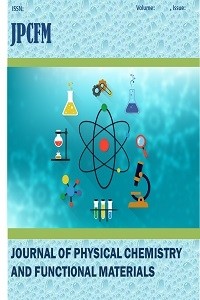Theoretical Analysis of the Reactivity of Carmustine and Lomustine Drugs
Theoretical Analysis of the Reactivity of Carmustine and Lomustine Drugs
Carmustine and lomustine nitrosoureas disintegrate to produce reactive intermediates that serve as classic alkylating agents in the body. Carmustine is given intravenously, while lomustine is administered orally. They both act as anti-cancer drugs; both could be used to treat brain tumors. To know the correct synthesis and reactivity of the molecules, structural analysis is very important. This research indicates the characterization of carmustine and lomustine drugs by quantum chemical measurements. The aforementioned compounds were optimized and the bandgap energies were calculated using DFT and HF methods at various basis sets. For all calculations, the B3LYP/6-311++G level has been chosen. For the two molecules, some parameters such as bond length, bond angle, and dihedral angle were calculated. Also, HOMO – LUMO energies were calculated to predict the more reactive molecule; the calculations included ionization potential, electron affinity, electronegativity, dipole moment properties, chemical hardness, and chemical softness. Moreover, electrostatic molecular potentials and Mulliken atomic charges were also described. All calculation results showed that lomustine is more reactive compared to carmustine.
___
- 1. R.F. Ozols, Molecular and clinical advances in anticancer drug resistance. Vol. 57. 2012: Springer Science & Business Media. 2. R.A. Omer, et al., Theoretical analysis of the reactivity of chloroquine and hydroxychloroquine. Indian Journal of Chemistry-Section A (IJCA), 2020. 59(12): p. 1828-1834.
- ISSN: 2651-3080
- Yayın Aralığı: Yılda 2 Sayı
- Başlangıç: 2018
- Yayıncı: Niyazi BULUT
Sayıdaki Diğer Makaleler
Theoretical inhibitor Calculation for Synthesis of Two New thiazole Derivatives
Influence of crushed sand on the dynamic modulus of elasticity of sand concrete
Review of Optoelectronic Properties of ZnO Photodetector
Kishwar Mohammed WASMAN, Bestoon HAMADAMEEN
Abdu BELLO, Abubakar HAMİSU, Naziru Muhammad ALHASSAN
The Determination of Eigenvalues and Eigenvectors of the Orbital Angular Momentum
Kishwar Mohammed WASMAN, Saman MAWLUD
Review on Surface Texturing Method for Solar Cell Efficiency Enhancement
Razaw Dindar HUSSEİN, Dilshad ISMAEL
A Review on the Effect of Mechanical and Thermal Treatment Techniques on Shape Memory Alloys
Safar Saeed MOHAMMED, Mediha KÖK, Ibrahim QADER, Razaw QADIR
